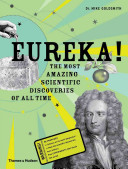2018 School Spending Survey Report
Eureka!: The Most Amazing Scientific Discoveries of All Time
96p. chron. glossary. illus. index. photos. reprods. Thames & Hudson. 2014. Tr $19.95. ISBN 9780500650257.
COPY ISBN
In an engaging, browsable volume, Goldsmith profiles nineteen scientific breakthroughs and the people credited with those discoveries. Grouped by topics (e.g., medicine, planet earth, the universe), each four-page section includes an overview of the concept, a full-page photo or illustration of the scientist, and an account of how the discovery was made. Additional illustrations help to explain the scientific content. Timeline. Glos., ind.
ALREADY A SUBSCRIBER? LOG IN
We are currently offering this content for free. Sign up now to activate your personal profile, where you can save articles for future viewing




Be the first reader to comment.
Comment Policy:
Comment should not be empty !!!